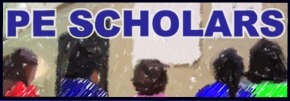|
The curriculum has its foundation in the physical education philosophy that
uses the
Illinois State Standards in Physical Education, as guidelines. In
order to enhance the students' ability to learn, various teaching methods are
utilized such as self-discovery, mass-task, guided discovery, and
cooperative learning. All the information transmitted to the students
display consideration for students' biological age, cognitive maturity,
number of lessons per unit, and previously acquired knowledge and skill
from different units and grade levels. Throughout the school year the
students should have been in contact with a wide range of physical activity
and situations that encourage them to cooperate with others.
The students also take an active part in the curriculum, as the assessment
is heavily based on self-assessment, which promotes a personal investment and
empowers the student in his or her own ability. Knowledge and skill is
acquired through units, which are divided into a number of lessons.
The units are repeated in each grade level from Kindergarten to 4th grade;
however, the difficulty level of the skills increases with each grade level
as the students mature biologically and cognitively. In 3rd grade the
students begin with lead up games to real sports and games. Initially
psychomotor skills are uncomplicated and increase in difficulty with the students' skill level. This should
provide a reliable foundation for further intellectual and psychomotor
growth. It is also based on the biological maturity of the students, as
one cannot see children as miniature adults.
When children grow so do their bones, muscles, and all other parts of the
body. The growth of the muscle is not hypertrophy, which we might see
in adults who are involved in strength training. During this rapid growth the students'
neurological connections with muscle have difficulty keeping up, which
means that the children cannot utilize the full potential of their muscle.
When children see strength gains at this age it is usually due to
neurological development in the nervous system and when children move in
new and unfamiliar manners they utilize parts of muscles that they
usually do not use. Thus, a variety of movements encourages an
increase in neuromuscular activity as more motor units must be activated.
This should lead to increased strength, enhanced locomotor skill, enhanced
body awareness, improved kinesthetic intelligence, decreased number of
accidents due to better body awareness, and more.
In the 4th grade students begin to develop leadership skills in order to
further their understanding of their own abilities. This continues
into 8th grade through the warm up phase, and throughout each unit where
students are asked to lead and take authority roles within the physical
education setting. In addition, the curriculum changes in regards to
what the students accomplish in the classroom by actually participating in
real sports and leisure activities that they can seek out on their own time
throughout life. With this curriculum the physical education program
hopes to develop young students with a positive outlook on their overall
health covering biological, psychological, and social aspects of life.
|
ANNUAL CURRICULUM
• Warm Up
• Locomotor
Movement (K-4)
• Kindergarten
• Grade 1
• Grade 2
• Grade 3
• Grade 4
• Grade 5
• Grade 6
• Grade 7
• Grade 8 |
